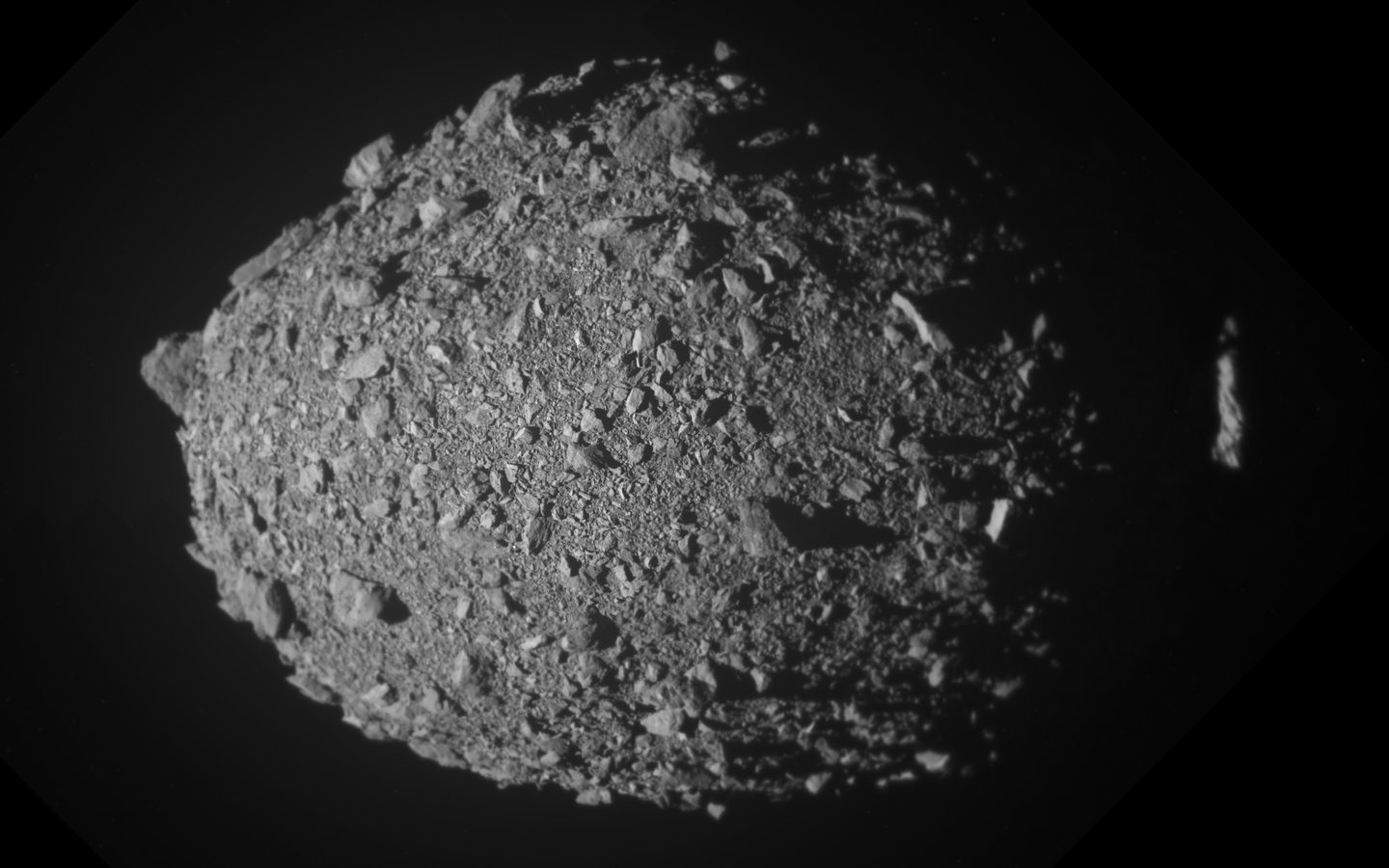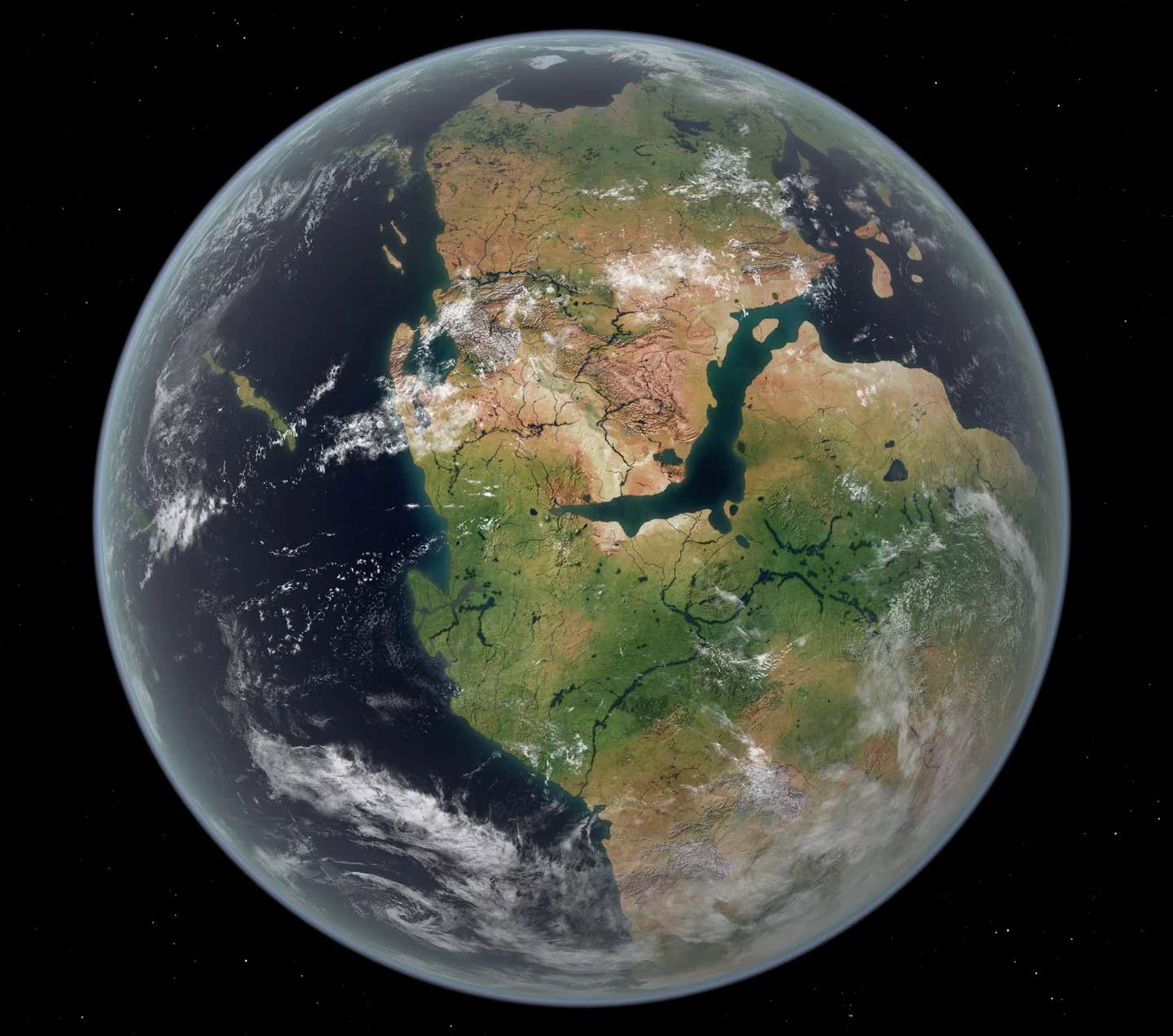Deflecting asteroids isn’t as easy as scientists previously thought
DART’s asteroid impact changed more than an orbit—it launched boulders carrying triple the spacecraft’s momentum, reshaping defense plans.

Asteroid Dimorphos. NASA’s DART mission proved it could shift an asteroid’s orbit, but new findings reveal ejected boulders added surprising momentum and complexity. (CREDIT: NASA/Johns Hopkins APL)
When NASA’s DART spacecraft collided with a small asteroid moon in late 2022, the impact made history. It was the first real-world test of a bold planetary defense idea: Could a spacecraft push an asteroid off course by crashing into it? The answer was yes—but not in the simple way many expected.
The target was Dimorphos, a moon orbiting the larger asteroid Didymos. The mission’s aim was clear: shift Dimorphos’ orbit by using the DART spacecraft as a kinetic impactor. The result was a success. The impact changed the moon’s orbital period by 33 minutes. But what happened after the crash opened a new chapter in asteroid science.
Boulder Barrage Carries Unexpected Force
As DART slammed into Dimorphos, it not only sent dust and small debris flying—it launched a swarm of boulders into space. These rocks, some up to 3.6 meters in radius, moved at speeds of up to 52 meters per second. And together, they carried more than three times the momentum of the spacecraft itself.
This surprise was revealed through images taken by LICIACube, a tiny Italian spacecraft that flew alongside DART. Launched by the Italian Space Agency, LICIACube captured the scene just seconds after the impact. Its pictures showed the expanding cloud of ejecta in remarkable detail.
A team led by Tony Farnham at the University of Maryland studied 104 of the boulders thrown off Dimorphos. Using parallax from multiple images, they tracked the boulders’ paths through space and calculated their speeds and directions. The results showed two clear clusters of material, not a random scatter.
“We saw that the boulders weren’t scattered randomly in space,” said Farnham. “Instead, they were clustered in two pretty distinct groups, with an absence of material elsewhere, which means that something unknown is at work here.”
One cluster, making up around 70 percent of the rocks, was flung toward the south. The team believes these may have broken off from two large surface boulders named Atabaque and Bodhran—possibly shattered by DART’s solar panels just before impact.
Related Stories
Ejecta Reveals Complex Impact Physics
Jessica Sunshine, a co-author of the study and a professor of astronomy and geology at Maryland, helped explain what made this impact different from past missions. She compared DART to NASA’s earlier Deep Impact mission, which hit a comet in 2005.
“Deep Impact hit a surface that was essentially very small, uniform particles, so its ejecta was relatively smooth and continuous,” she said. “And here, we see that DART hit a surface that was rocky and full of large boulders, resulting in chaotic and filamentary structures in its ejecta patterns.”
These differences reveal that what an asteroid is made of—and how its surface is structured—can shape the results of an impact in surprising ways. That’s critical for future defense missions, which may have to deal with wildly different space rocks.
The shape and direction of the ejecta are key to understanding how momentum from the impact was transferred. Models of the dust plume show it formed a cone, wider north-to-south than east-to-west. Its central axis was slightly tilted, off-center from the incoming path of the spacecraft. This angle matters, because it means the ejecta didn’t just push back along DART’s trajectory—it moved out sideways, too.
This sideways force could tilt the asteroid’s orbit or even change how it spins in space. The research team estimates that the recoil might have shifted Dimorphos’ orbital plane by up to one degree. That may not sound like much, but in spaceflight terms, it’s significant.
Why Momentum Direction Matters in Planetary Defense
The heart of the DART mission was to measure what scientists call "momentum enhancement." This is the extra push given to an asteroid not just from the spacecraft, but from the material it kicks up. The momentum from the boulders ejected was directed almost perpendicular to DART’s path. That adds a twist to the expected outcome.
“While the direct impact of the DART spacecraft caused this change, the boulders ejected gave an additional kick that was almost as big,” said Farnham. “That additional factor changes the physics we need to consider when planning these types of missions.”
This insight is crucial for future efforts to protect Earth from incoming space objects. If the goal is to nudge an asteroid just enough to miss our planet, every piece of momentum—and its direction—matters.
Jessica Sunshine emphasized this point with a vivid metaphor. “You can think of it as a cosmic pool game. We might miss the pocket if we don’t consider all the variables.”
For this reason, tracking how debris moves after impact is essential. LICIACube made that possible by taking dozens of images during its flyby, between 29 and 243 seconds after DART hit. These images revealed not just the dust cone but intricate filaments and individual boulders.
Because LICIACube changed position during the flyby, scientists could use parallax—the slight change in position of objects from different angles—to build a 3D map of the debris. This helped them calculate true velocities and trace how features in the ejecta evolved over time.
The Role of Hera and Future Missions
This kind of analysis will be key to Europe’s Hera mission, which is scheduled to arrive at the Didymos system in 2026. Hera will examine the aftermath of the DART impact in close detail, including the shape and rotation of Dimorphos.
The European Space Agency plans to use Hera’s instruments to measure the asteroid’s surface, study remaining craters, and track any motion changes from the ejected material. The new study from the Maryland team provides a roadmap for what Hera might find.
The study was published in the Planetary Science Journal, and offers a new level of understanding of how an asteroid responds to impact. It doesn’t just confirm that kinetic impactors work—it shows how complex the physics can be once an asteroid starts to break apart and eject material.
In the end, DART’s success was not just in moving an asteroid. It was in showing that space is full of surprises. The boulders that burst from Dimorphos carry a message: when trying to protect Earth, you’ll need to account for every rock.
Note: The article above provided above by The Brighter Side of News.
Like these kind of feel good stories? Get The Brighter Side of News' newsletter.



